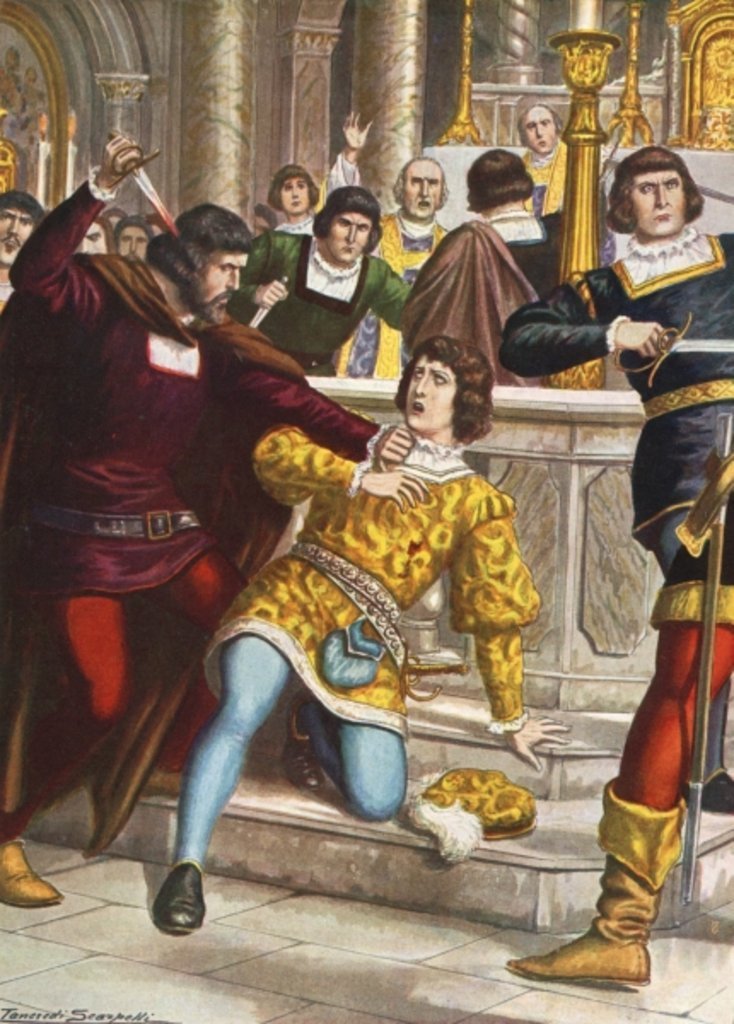1478
Murder at Easter Mass
The Medici family, led by Lorenzo the Magnificent, were the de facto rulers of Renaissance Florence but they had powerful enemies. Inside the city they were envied by the old-money Pazzi clan of rich bankers, and outside the city they were despised by the Pope, Sixtus IV (after whom the Sistine Chapel is named.) The Medici had frustrated the pope’s plan to place one of his nephews on the throne of a city near Florence so Sixtus turned to the Pazzi to gain revenge. He took away valuable papal monopolies from the Medici that hurt them financially, and conspired to murder Lorenzo and his brother and invade Florence with an army of mercenaries.
Various plots were hatched, including poisoning the brothers, but it was finally decided that the best place to get at the victims, unarmed and together, would be at Easter Mass. A professional assassin was hired for the task but he recoiled when told that the murder was to take place at the elevation of the Host during communion. He refused the job, claiming that such a deed in the face of Christ would merit eternal damnation, so the killing was assigned to priests and members of the Pazzi family.
With the Medici brothers in the front row and the conspirators behind them, the murderers waited until the ringing of the bell that signifies the climax of the Mass. Then they leapt upon Lorenzo and brother Giuliano. The latter was killed instantly but Lorenzo was only wounded, his heavy scarf and cloak protecting him from the knife of the priest who attacked him. While Lorenzo was whisked away to safety, the Pazzi clan attempted to seize the city hall and its arsenal, and ran through the streets crying “Liberty!”, hoping to raise a popular rebellion. They were met with resistance by Medici supporters who shouted their own battle cry and turned on the conspirators who found they had almost no support. The mob exacted summary justice on the Pazzi family. The Archbishop of Pisa, one of the plotters, was hanged, in his full ecclesiastical garb, from the balcony of the city hall along with other leaders of the conspiracy. Pazzi mansions were looted while their followers were dragged through the streets and murdered.
Rather than be embarrassed that the head of the Catholic Church had conspired with archbishops and priests to commit a murder during the most sacred moment in the Christian calendar, the papacy expressed outrage that clergy had been killed in the retaliation and declared war on Lorenzo de Medici, a crisis which he was able to weather. A final ironical note: Guiliano’s mistress at the time of his death was pregnant. The posthumous illegitimate child was raised by the Medici clan and grew up to be Pope Clement VII.
